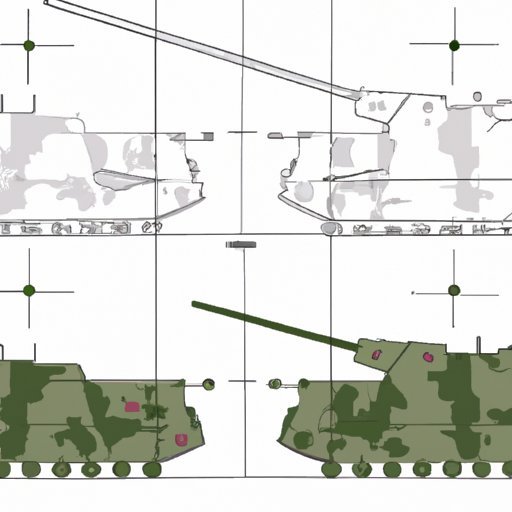Introduction
The term “stalemate” is used to describe a situation in war where neither side is able to gain an advantage or achieve victory. This was especially true during World War I, when major advances in military technology resulted in a prolonged conflict with no resolution. This article will explore how these advancements in military technology helped create the stalemate that characterized the Great War.
Impact of Machine Guns, Tanks, and Other Weapons on the Battlefield
One of the most significant changes in military technology during World War I was the development of machine guns and other automatic weapons. These weapons allowed for a much higher rate of fire than conventional rifles, resulting in increased lethality on the battlefield. In addition, the introduction of tanks provided a new way to break through enemy lines and attack targets from unexpected angles.
These advances led to the development of new tactics and strategies to counter them. Infantrymen began using cover more frequently, while artillery units adopted indirect fire techniques in order to reduce their exposure to enemy fire. The use of barbed wire also became more widespread, as it provided a physical barrier against advancing troops.
Role of Trench Warfare and Defensive Fortifications
The development of machine guns and other automatic weapons also had a huge impact on the way war was fought on the Western Front. The increased lethality of these weapons made it impossible for infantry units to make a direct assault on enemy positions. As a result, both sides began digging trenches in order to provide protection from enemy fire. This led to the development of trench warfare, which became the main form of combat on the Western Front.
In addition to trenches, both sides constructed a variety of defensive fortifications in order to protect their troops from enemy fire. These included concrete bunkers, barbed wire entanglements, and even underground tunnels. All of these fortifications helped to create a stalemate on the battlefield, as neither side was able to make any significant progress.

Development of Aerial Combat and Its Role in the Stalemate
Aerial combat also played a major role in creating the stalemate of World War I. Early in the war, airplanes were used primarily for reconnaissance missions, but as the conflict progressed, they began to be used for offensive operations as well. Aircraft were used to bomb enemy positions, drop leaflets, and even conduct dogfights with opposing planes.
Innovations in aerial combat helped to create the stalemate of World War I. Airplanes provided a way for both sides to attack each other without having to engage in direct combat. This allowed both sides to maintain their defensive positions while still being able to inflict damage on the enemy.

Use of Chemical Weapons and Their Effects
Another major advancement in military technology during World War I was the introduction of chemical weapons. These weapons, such as chlorine gas and mustard gas, were used to devastating effect by both sides in the conflict. The use of chemical weapons caused thousands of casualties and helped to create a stalemate, as neither side wanted to risk further losses by attacking the other.
The effects of chemical weapons were not limited to the battlefield. Many of the casualties caused by these weapons suffered long-term health effects, leading to a decrease in morale among troops. This further contributed to the stalemate, as both sides were unwilling to continue fighting due to the high cost of human life.

Technological Innovations Such as Radio Communication and Submarines
The use of radio communication and submarines also had an important role in creating the stalemate of World War I. Radio communication allowed for quick and reliable communications between commanders in the field, allowing them to coordinate their movements more effectively. Submarines, meanwhile, provided a way for the Allied forces to disrupt supply lines and prevent German ships from entering the Atlantic Ocean.
The use of these technologies helped to create a stalemate, as both sides were unable to gain an advantage over the other. The ability to communicate quickly and efficiently allowed for better coordination of troops, while the use of submarines gave the Allies an edge in disrupting German supply lines.
Conclusion
Advances in military technology during World War I had a major impact on the way the conflict was fought. From machine guns to tanks to chemical weapons, these technologies allowed for increased lethality on the battlefield and led to the development of new tactics and strategies to counter them. The introduction of trench warfare and defensive fortifications also contributed to the stalemate, as did the development of aerial combat and the use of radio communication and submarines.
In conclusion, advances in military technology during World War I helped create the stalemate that characterized the conflict. While these technologies allowed for increased lethality on the battlefield, they also resulted in new tactics and strategies that allowed both sides to maintain their defensive positions. Further research should focus on how the use of these technologies impacted the outcome of the war.
(Note: Is this article not meeting your expectations? Do you have knowledge or insights to share? Unlock new opportunities and expand your reach by joining our authors team. Click Registration to join us and share your expertise with our readers.)
